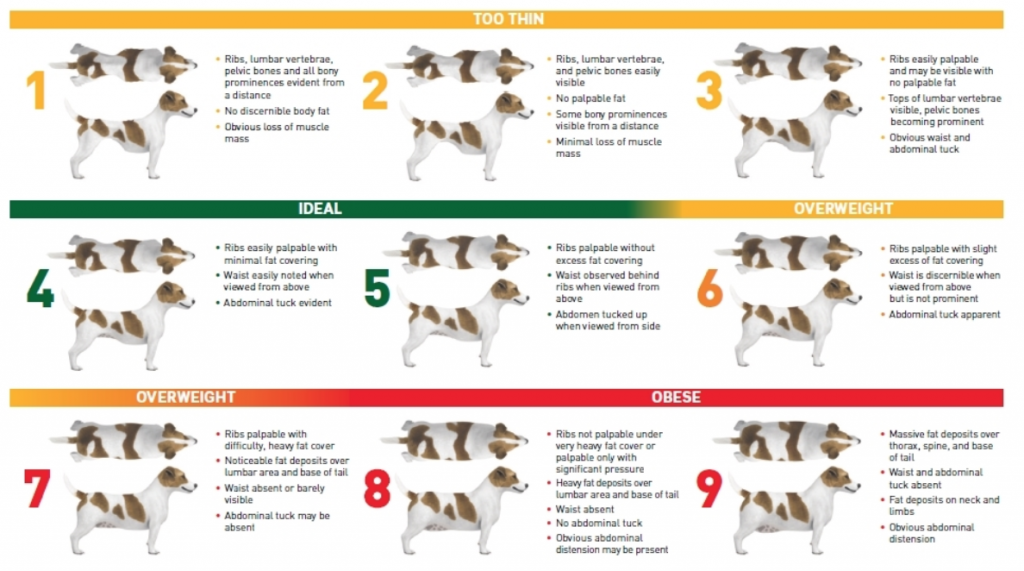It can be difficult to determine a healthy weight for your dog. While there are special breed specific guidelines you can follow, it becomes increasing difficult if you have a mixed breed dog, and even more so if you don’t know what those breeds are. We have put together some tips and tricks to hopefully help you keep your favorite four legged friend at their optimum weight.
When a dog becomes overweight, it negatively affects their health. On average, obesity takes off two years of a dog’s life expectancy. The risks associated with overweight dogs include heart disease, respiratory issues, high blood pressure, arthritis, and skin irritants. Their health and quality of life is much better when kept at a healthy weight.

While there are many charts and tables that can illustrate a dog’s ideal weight based on their breed, they cannot ever be completely accurate. The best test when evaluating your dog’s weight is to assess their body condition score. This can be done with visual inspection and palpation. Easily palatable ribs, an evident waist when viewed from above, and a visible abdominal tuck from the side are all signs of a dog at a healthy weight.

The above chart is a great tool to compare and assess your dog with, but if you are concerned about your dog’s weight, it is always safest to seek advice from your Veterinarian. If your dog is under or over weight, they can provide you with the tools and knowledge to get them to a healthy weight. Adjusting your dog’s food intake in conjunction with a proper exercise routine can keep your dog healthy and happy!
Sometimes we get caught it a trend thinking we have to prove we love to our dogs by feeding them extra snacks. Truth is we are doing more harm than good by feeding them unhealthy treats and “people” food. Helping to have a happy and healthy pup is the best thing you can do for your dog!
Check out our blog post on all natural pet products for more information on keeping your furry friends happy and healthy!

